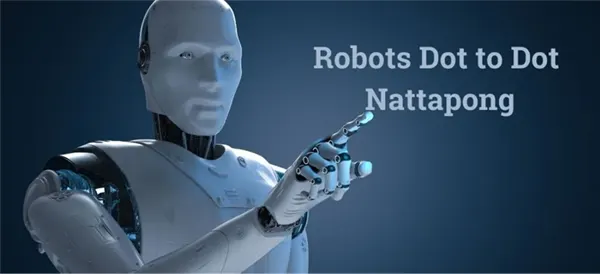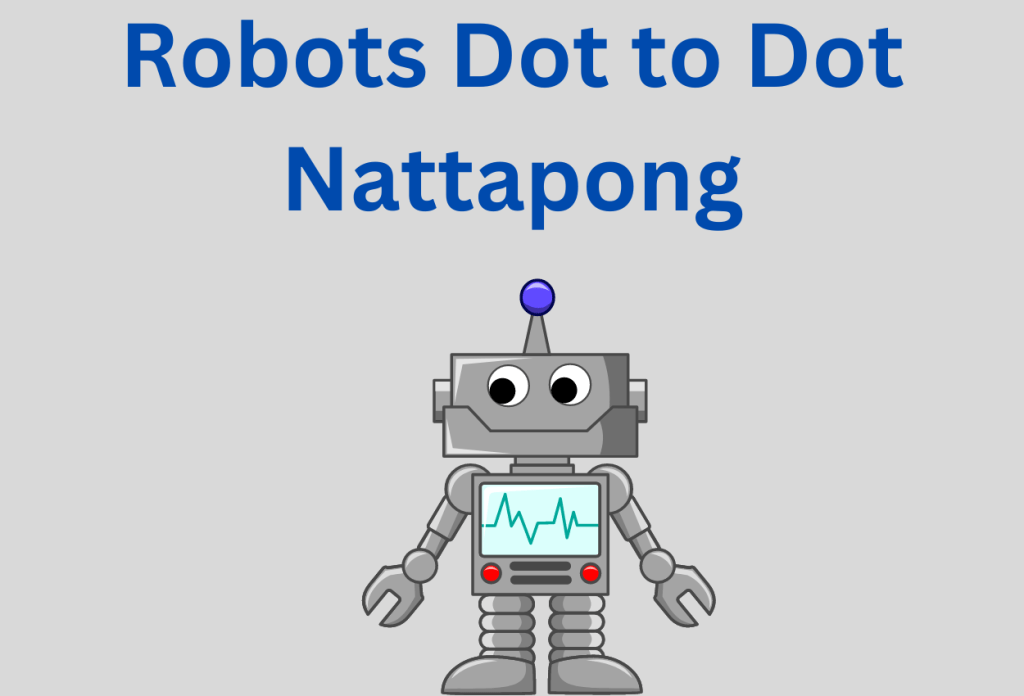Contents
Introduction to Robots Dot to Dot Nattapong
The concept of robots dot to dot Nattapong represents an intriguing intersection of technology and creativity, merging the realms of robotics with the engaging activity of dot-to-dot puzzles. This innovative approach originates from the growing need to enhance educational tools by incorporating engaging formats that stimulate cognitive skills and creativity among users of all ages. The robots utilized in this paradigm are designed to create and navigate dot-to-dot art, fostering a unique, interactive experience.
As a contemporary educational tool, robots dot to dot Nattapong not only serves as a fun activity but also encourages the development of essential skills such as problem-solving, hand-eye coordination, and fine motor skills. This combination of play and learning has garnered significant attention from parents, educators, and technology enthusiasts alike, further establishing its significance in today’s educational landscape.
The fundamental mechanics behind robots dot to dot Nattapong lie in the integration of various robotic technologies and dot-to-dot designs. These robots are programmed with specific paths that correspond to the dots on a given outline. As the robot completes the connections, it brings the image to life, effectively transforming a simple dot-to-dot activity into a dynamic and visually appealing experience. This captivating process not only captivates the imagination but also demonstrates the power of robotics in engaging the user’s creative faculties.
In exploring robots dot to dot Nattapong, we will uncover a broader dialogue on how these technologies can reshape learning environments and redefine the ways in which creativity and logic can coexist. This foundational understanding will set the stage for deeper discussions on the specific applications and benefits of integrating robotics into dot-to-dot artistry.
How Robots Dot to Dot Nattapong Works
The concept of robots dot to dot Nattapong centers around a creative and interactive approach to robotic design, utilizing the principle of connecting dots to form detailed structures. At its core, this innovative system operates by employing a series of sensors and actuators that enable it to interpret and react to user inputs. Users can engage with the dot-to-dot framework, either through a computer interface or a mobile app, allowing for a multifaceted building experience. This interactive element is crucial as it transforms a simple activity into an engaging learning opportunity for users of all ages.
The technology behind robots dot to dot Nattapong integrates advanced principles of engineering and programming. Users can select existing designs or create their own, with the robots automatically drawing connections between dots using motors that have precise control over movement. Each dot can represent a unique component of a robotic assembly, such as wheels, sensors, or lights, which come to life once they are connected correctly. This functionality emphasizes not only the importance of creativity but also the foundational concepts of robotics, such as mechanics and electronics.
Moreover, the programming aspect of robots dot to dot Nattapong plays a vital role in enhancing the user experience. The robots can be programmed to perform specific tasks or exhibit certain behaviors based on the design created by the user. This fosters a deeper understanding of coding and automation processes, coupling hands-on experience with theoretical knowledge. As users manipulate the dots into various configurations, they inadvertently learn about spatial relationships and the mechanics behind robotic operations.
Ultimately, the robots dot to dot Nattapong encourages a unique blend of creativity and education, making the learning journey not only informative but also enjoyable. Through this engaging technique, participants can witness firsthand the transformation from simple dots to sophisticated robotic entities, emphasizing the intricate dance of technology and imagination.
Benefits of Engaging with Robots Dot to Dot Nattapong
Engaging with robots dot to dot Nattapong offers a variety of benefits that extend beyond mere entertainment. One significant advantage is the enhancement of creativity. As participants interact with these robotic systems, they are encouraged to visualize ideas and concepts, which can lead to innovative problem-solving solutions. The process of connecting dots to form a complete image stimulates imaginative thinking, prompting users to see possibilities that they might not have considered otherwise.
Moreover, engaging in robots dot to dot Nattapong aids in the development of critical problem-solving skills. Users are often faced with challenges that require strategic thinking and logical reasoning. As they navigate through tasks and troubleshoot issues, they learn to approach problems methodically. This experience fosters resilience and adaptability, essential traits in today’s fast-paced world.
Technical know-how is another critical area where participants benefit. Working with robotics, participants gain insights into basic programming and mechanics, demystifying technology for them. This kind of hands-on experience is invaluable, as it prepares individuals for future careers in STEM fields, which are increasingly important in a technology-driven society. The excitement of manipulating robots captivates young minds and motivates them to delve deeper into science and mathematics.
Furthermore, engaging in robots dot to dot Nattapong fosters teamwork and collaboration. Participants often work in groups, which not only helps build interpersonal skills but also encourages the sharing of ideas and collective problem resolution. By working together, individuals learn to communicate effectively and appreciate diverse perspectives. As such, the collective engagement with robotic tasks proves to be a powerful educational tool that enriches both personal and academic growth.

The Future of Robots Dot to Dot Nattapong
The evolution of the field of robotics has been nothing short of remarkable, and the specific niche of robots dot to dot Nattapong is poised for significant advancements. As technology continues to progress, we can expect the integration of sophisticated artificial intelligence into these interactive experiences. This development is likely to enhance the personalization and adaptability of robots, allowing them to respond to individual user preferences and learning styles more effectively.
One of the most exciting prospects for robots dot to dot Nattapong is the potential for increased interactivity. Modern advancements are paving the way for robots that can engage users in more dynamic ways, leveraging sensors and smart technology to create immersive learning environments. This interactivity could transform traditional educational frameworks, as students may find engaging with a robot not only enjoyable but also educationally beneficial. Such an approach could foster creativity, critical thinking skills, and a love for learning among young users.
Furthermore, we may witness the commercialization of robots dot to dot Nattapong, extending their reach beyond educational institutions into homes and recreational venues. This move could bring interactive robotics into the mainstream, leading to a variety of consumer-oriented products that blend entertainment with education. As technologies mature, the cost of producing advanced robots is likely to decrease, making them accessible to a broader audience. This democratization of technology may encourage families to invest in such robotics, thereby enriching the learning experiences of children.
In conclusion, the future of robots dot to dot Nattapong holds great promise. The blend of AI innovations, heightened interactivity, and potential commercial applications paints an optimistic picture for the growth of this field. As these technological advancements unfold, it invites enthusiasts, educators, and innovators alike to engage with the journey of exploration and creativity in the domain of robotics.
You May Also read
